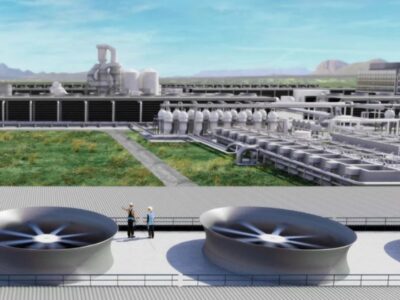Formula 1 is determined to get to the finish line – and it’s quickly speeding ahead. The company has committed to reaching net-zero carbon emissions by 2030 and is well underway in achieving its intermediate goals.
As the global racing company celebrates its 70th year, F1 has already reduced the freight of its remote broadcast operations. It redesigned freight containers allowing them to transport equipment on more efficient aircraft, rail and sea freight.
F1 also plans to deliver the most powerful and efficient race cars that sustainably fueled hybrid power units will power. F1’s new hybrid engine already achieves over 50% thermal efficiency, resulting in faster lap times while using less fuel.
F1 has partnered with Aramco and all major fuel makers in F1 to develop a fully sustainable fuel that will be introduced with a new engine in 2026.
“Over its 70-year history, F1 has pioneered numerous technologies and innovations that have positively contributed to society and helped to combat carbon emissions,” said Stefano Domenicali, president and CEO of Formula 1. “From ground-breaking aerodynamics to improved brake designs, the progress led by F1 teams has benefitted millions of cars on the road today. Few people know that the current hybrid power unit is the most efficient in the world, delivering more power using less fuel, and hence CO2, than any other car.”
The company has been working on sustainability since 2019 with various race promoters, partners, suppliers, broadcasters, teams, and the Fédération Internationale de l’Automobile (FIA) to reduce the sport’s greenhouse gas (GHG) emissions.
In 2020, it accelerated plans to broadcast its races more sustainably. It used remote production, which resulted in a 34% decrease in cargo and a 36% reduction in traveling staff that goes to every race.
F1 also adopted a honeycomb structure for the walls of its traveling broadcast center, resulting in lower total weight and reduced GHG emissions. Several races in 2021 also benefited from replacing diesel with hydrotreated vegetable oil in core broadcasting generators.
The company transitioned to 100% renewable electricity for its permanent facilities at all its U.K. offices. It reduced its natural gas usage at its media and technology center and plans to eliminate gas reliance in the long run. It also uses solar panels at the French and Canadian circuits, while the Circuit de Catalunya (Spain) is now 100% renewably powered.
F1 plans to reuse, recycle or compost all event waste during the race events. For that, it will have no single-use plastic and only provide recyclable or compostable materials. In addition, it’s also going to provide incentives for fans to travel to the races in a greener way. For example, it will encourage going to the races by public transport, bike, foot, or electric vehicles. The remaining emissions from the travel will be offset.
Before setting its 2019 sustainability goals, the company estimated its Scope 1, 2, and 3 footprint to be 257,000 tonnes of CO2 emissions in 2018. Logistics represented 45% of the total, business travel 28%, facilities and factories 19%, event operations 7%, and less than 1% came from power unit emissions.
“Leveraging the immense talent, passion, and drive for innovation held by all members of the F1 community, we hope to make a significant positive impact on the environment and communities in which we operate,” said Domenicali.





